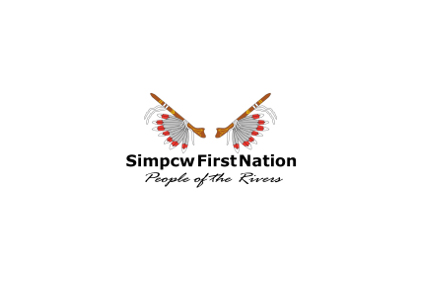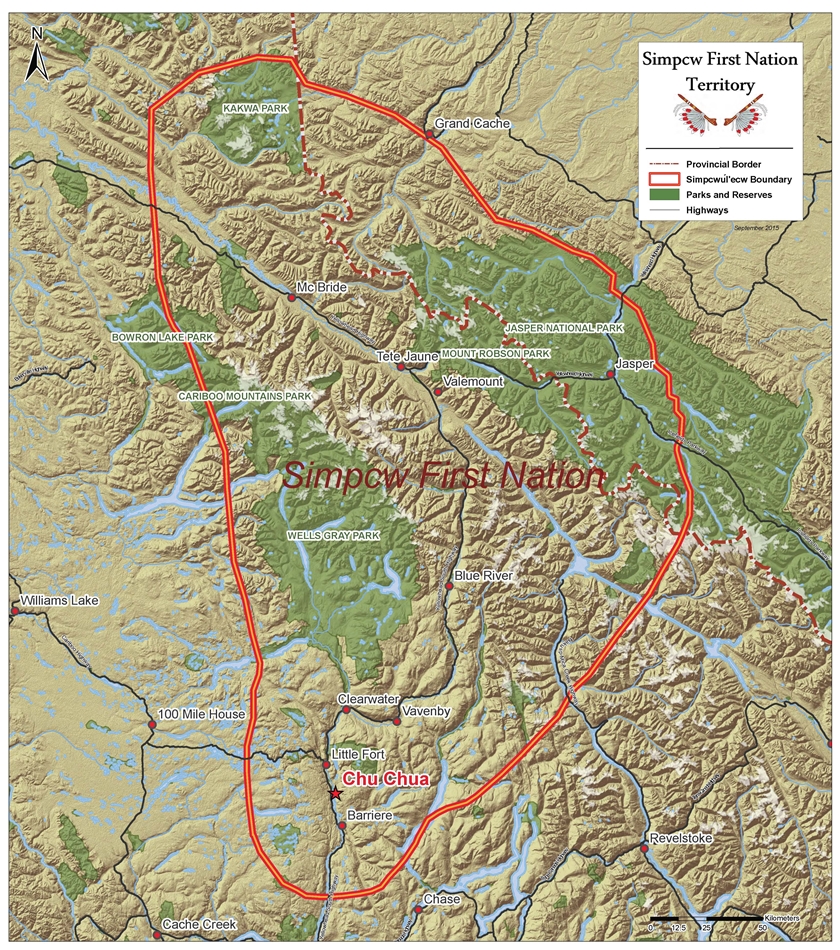Simpcw First Nation
People of the Rivers
The Simpcw are a division of the Secwepemc (Shuswap) Nation of the Interior Plateau of British Columbia and speak the western dialect of the Secwepemctsín language.
Simpcwemc are the primary occupants, stewards, and rightful defenders of Simpcwúl’ecw which we have protected and enjoyed since time immemorial. Simpcwúl’ecw encompasses approximately 5,000,000 Ha extending from south of Vinsulla and north to Kakwa Park, from west of Goat River and east of Jasper, including the Big Bend of the Columbia River and northern Adams Lake from south of Squam Bay, and includes the entirety of Wells Gray Park.

Traditionally Simpcwemc (Simpcw peoples) travelled throughout spring, summer, and fall, gathering food and materials from across Simpcwul’ecw, with careful and coordinated stewardship ensuring that no area was overharvested. Simpcw were noted for their hunting ability, and in the summer months much of their time was spent in hunting camps in the mountains above the North Thompson, upper Fraser, and Columbia Rivers. River systems provided salmon and other fish, which were caught in weirs, nets, and by spear. Both meat and fish were smoked or dried then stored for later consumption in caches at various elevations, to be accessed in relationship to the seasons and snow melt. Plant resources for foods, medicines, and technology were also collected and preserved for winter use.
During the winter months Simpcwemc assembled at village sites, in the valleys close to rivers, occupying semi- underground pithouses, or c7ískten̓. Archaeological studies have identified winter home and cache sites at a number of locations including Tete Jaune Cache, Jasper, Finn Creek, Raft River, Clearwater-North Thompson Park, Vavenby, Birch Island, Chu Chua, Barriere River, Louis Creek and McLure. Contemporary Simpcwemc continue to use cultural knowledge and practices passed down from Elders for resource harvesting and stewardship within Simpcwúl’ecw.
Today about half of the 725 Simpcw members live in Chu Chua, on the North Thompson River just north of Barriere. Simpcw Chief & Council oversee the governance, social, educational, and economic development of the Band, in addition to negotiating with outside entities safeguard Simpcw land, resources, and cultural heritage.

Among the many programs operated by Simpcw, are the Dunn Lake Hatchery est. 1983, which produces 20,000 Coho salmon each year to support local waterways; the Simpcw Health Program, which works to create wellness in all aspects of life, in addition to operating an on-site clinic for community members; the Chu Chua Volunteer Fire Department, est. 1985; The Natural Resources Department, which works in partnership with Simpcw Administration and Council to monitor any activity that could impact the multitude of resources found within Simpcwúl’ecw; and Neqweyqwelsten School and Head Start Program, est. 1983, which teaches Secwepemctsín and cultural heritage alongside the standardized BC elementary school curriculum.
Simpcw Resources LLP, the economic arm of the band, uses sustainable and environmentally responsible methods of monitoring and management of land resources in partnership with proponents in Simpcwúl’ecw, including T’Knémentem Energy, Estsék’ Environmental Services LLP, and T’micw-kt Cultural Services LLP.
Together, Simpcw’s administration, membership, and community continue to focus on the advancement of its people, language, culture, and educational opportunities, along with the protection, conservation, and sustainable management of the land for generations to come.